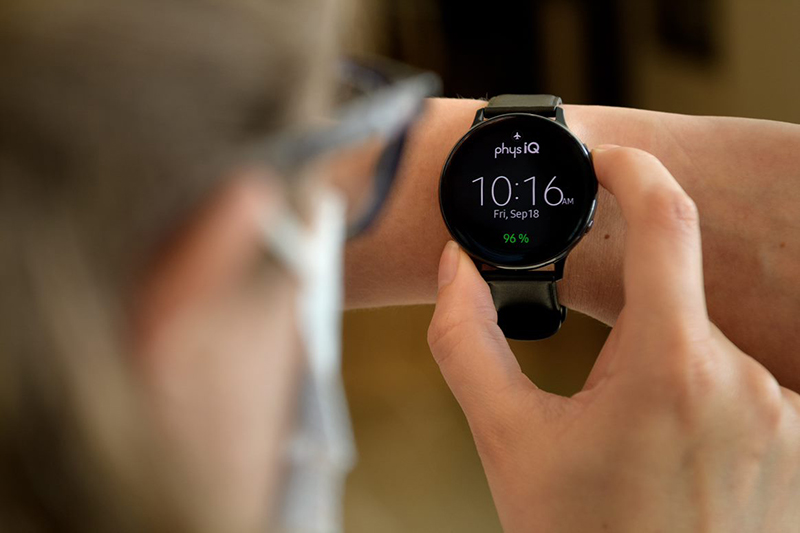Inside an Individual’s Physiological Signature
Originally published in Medical Device & Technology
2 min read
![]() physIQ
:
September 3, 2021
physIQ
:
September 3, 2021

Originally published in Purdue Engineering IMPACT: Summer 2021
Certain changes in a person’s heart and breathing rates could precede symptoms of COVID-19, an increasing number of studies suggests.
Purdue University researchers have begun a study that would help determine if continuously collected biometric smartwatch data could be used to reliably and accurately detect these signs early, which could indicate that a potentially asymptomatic user should get tested for COVID-19. Data from the study will inform new algorithms to be developed by physIQ, a Purdue-affiliated digital health technology company based in Chicago. Smartwatches on the market already collect a wide range of physiologic data, but incorporating metrics such as heart rate, heart rate variability and respiration rate that may help detect COVID-19 at the earliest stages will take more research, studies by companies such as Fitbit have stated.
Although smartwatch-like devices are not currently substitutes for gold-standard diagnostic tests used in clinics and hospitals, some wearable devices are starting to serve as tools for helping a clinician make a diagnosis.
“There won’t be a point where a smartwatch can tell you that you’re COVID-19 positive, but it could potentially say, ‘Within the next couple of days, you might be getting sick and should go get tested,’” says Craig Goergen, the Leslie A. Geddes Associate Professor of Biomedical Engineering.
Previous studies have shown that viral infections increase resting heart and respiration rates and decrease heart rate variability before a patient develops a fever, Goergen says. It’s not yet known if these indicators, particularly respiration rate, can be measured reliably enough at the wrist to imply infection.
“An increased heart rate or respiration rate means something different if it increased while you were resting as opposed to running, but most smartwatches have difficulty distinguishing that,” he says, “so it is really recovery and resting periods that we are focused on with this approach.”
In a study of up to 100 participants, Goergen’s team will first determine whether wearing a smartwatch to collect these indicators is practical, unobtrusive and user-friendly. Each participant will be mailed a Samsung Galaxy smartwatch with a physIQ app loaded to collect data, FDA-cleared adhesive chest-based biosensors that collect a single-lead electrocardiogram signal, and a Samsung Galaxy smartphone to use for five days of continuous monitoring while Goergen’s lab analyzes data from the app remotely using physIQ’s cloud-based accelerateIQ platform.
Data from the chest patches will be processed by physIQ’s FDA-cleared artificial intelligence-based algorithms for deriving heart rate, respiration rate and heart rate variability. These data will serve as “gold standard” references to compare with data from the smartwatches.
Researchers led by Fengqing Maggie Zhu, assistant professor of electrical and computer engineering, will analyze data collected by Goergen’s lab and determine how much of it could be used to train algorithms for developing smartwatch software aimed at detecting these metrics better. Watchband tightness, for example, could affect data availability and quality.
The end goal is that the software, which a smartwatch would access from a cloud-based server, would show subclinical changes in metrics unique to the individual by “learning” from large amounts of data continuously collected while wearing the watch. The researchers plan to eventually expand the study to include individuals at high risk of contracting COVID-19.

Originally published in Medical Device & Technology

Originally published in Pixel Scientia Labs

Originally published in Crain's Chicago